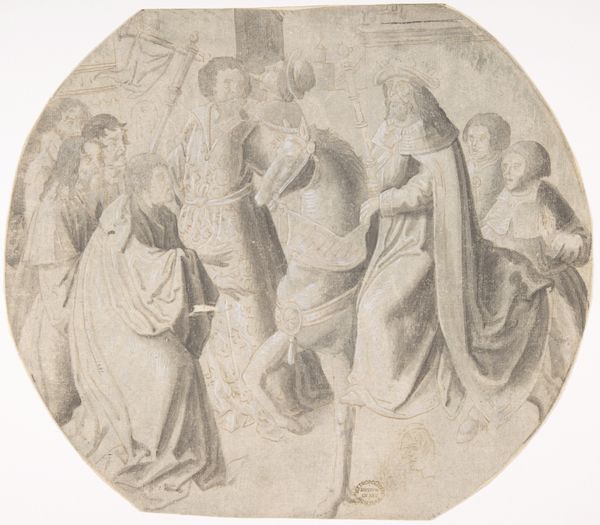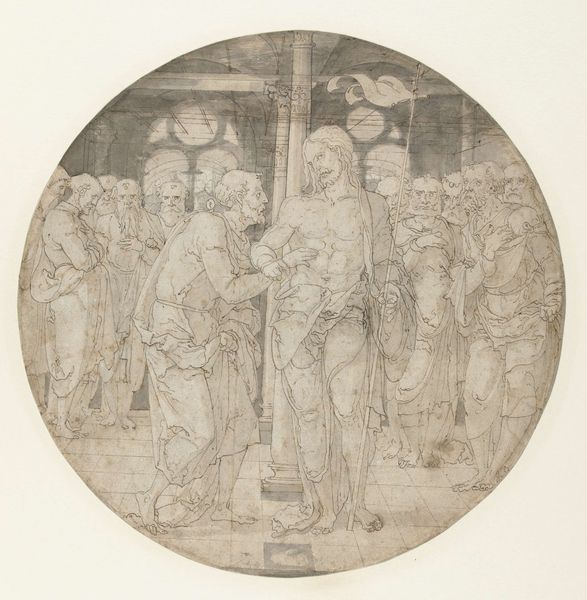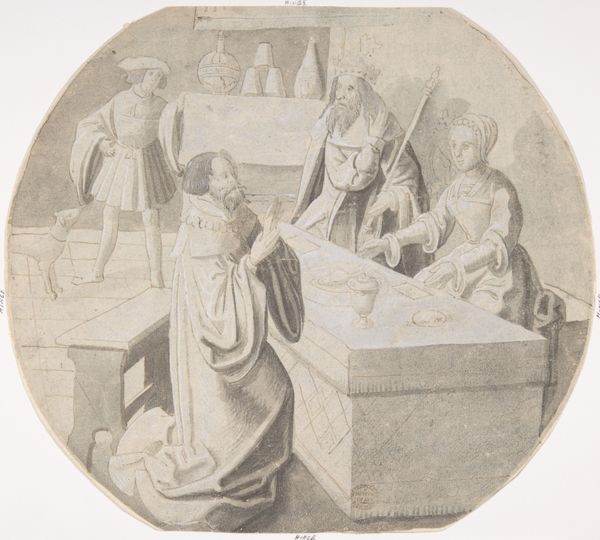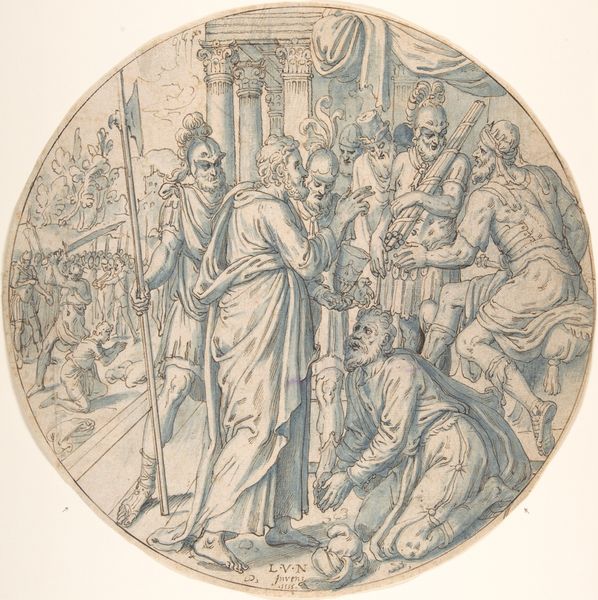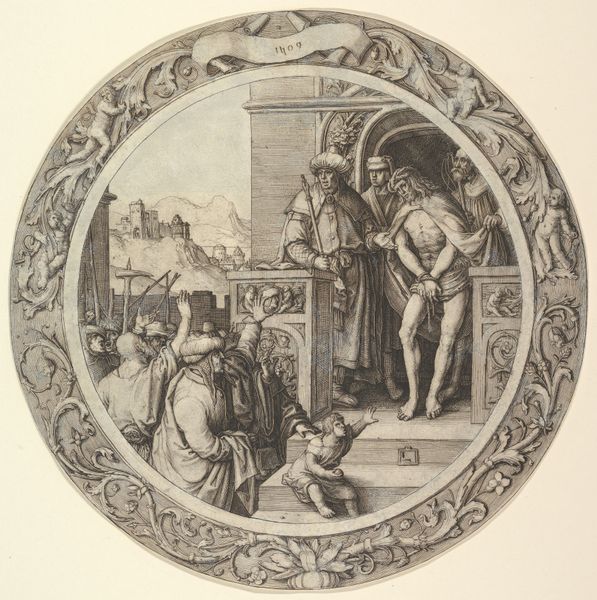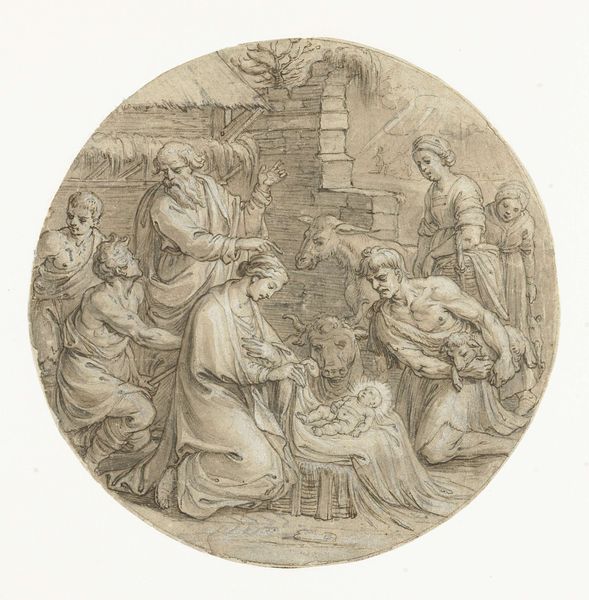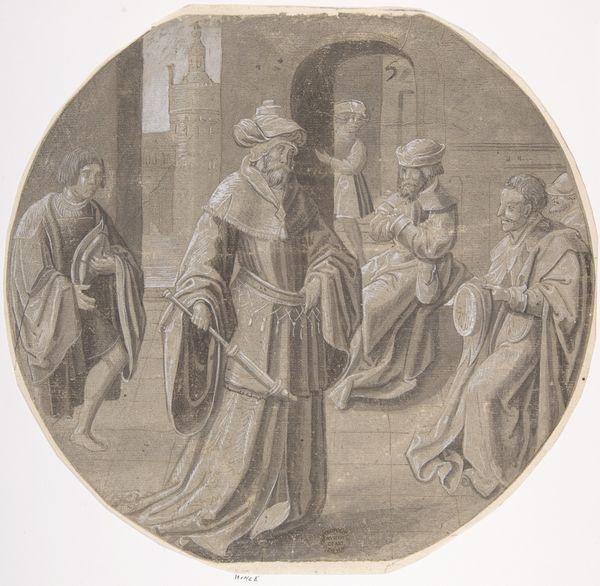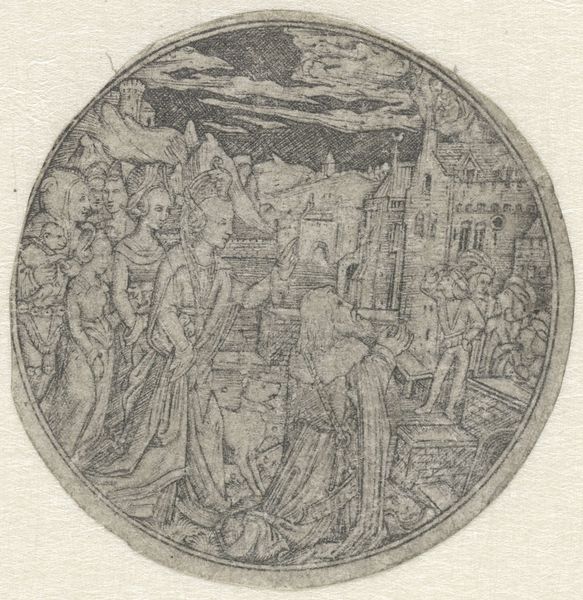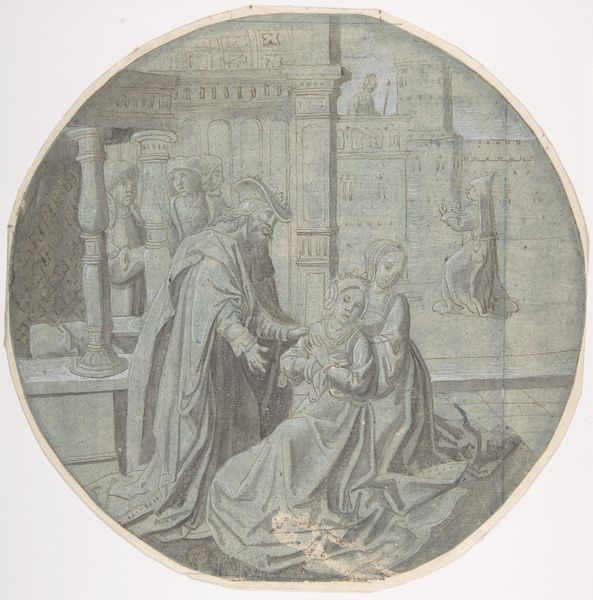
drawing, print, paper, ink, charcoal
#
portrait
#
drawing
# print
#
charcoal drawing
#
paper
#
11_renaissance
#
ink
#
charcoal
#
history-painting
Dimensions: sheet: 8 3/8in. (Irregular shape: Circular with top and bottom cut off)
Copyright: Public Domain
Editor: This is "King Ahasuerus in Council," a drawing made with charcoal, ink, and paper between 1500 and 1540 by Pseudo-Aert Ortkens. It has such a reserved, stately feel to it. What are your thoughts when you look at this artwork? Curator: I notice primarily the geometric structure underpinning the composition. Observe the circular format; how the figures are meticulously arranged within that implied boundary. It establishes an inherent visual harmony. Notice, also, the stark contrasts between the dark, heavily-worked areas of shadow and the thinly-sketched figures – the interplay creates a visual rhythm, wouldn’t you agree? Editor: I do, now that you mention it. The king is so much darker than the other figures. But what about the composition within the circle? Curator: Consider how the artist positions King Ahasuerus centrally, enthroned upon a raised dais. The orthogonal lines of the throne's steps and the figures’ arrangement all direct the gaze towards this pivotal figure. The strategic placement underscores the hierarchy implicit within the depicted scene. Also note the linear quality – the emphasis not on coloristic or textural nuance, but on precise, deliberate lines that articulate form and space. How does that affect your interpretation? Editor: I think the emphasis on line really does emphasize the figures themselves. What is that object being offered to him by the person on the right? It's almost weightless, compared to Ahasuerus's commanding presence. Curator: Indeed. That subtle variation in linework conveys not merely a physical attribute, but also hierarchical distinctions. So, we are encountering how line quality enhances the visual narrative and directs our gaze. Now, how would you characterize the application of charcoal and ink across the picture plane, in terms of its expressive function? Editor: Thinking about it that way, the more subdued background really forces the focus to the individuals and, I guess, their interactions with each other, which feels… more modern than I thought it would for the Renaissance! Thanks, this has given me a lot to consider. Curator: And for me, your observation highlights how formal analysis allows for dynamic reinterpretations.
Comments
No comments
Be the first to comment and join the conversation on the ultimate creative platform.
